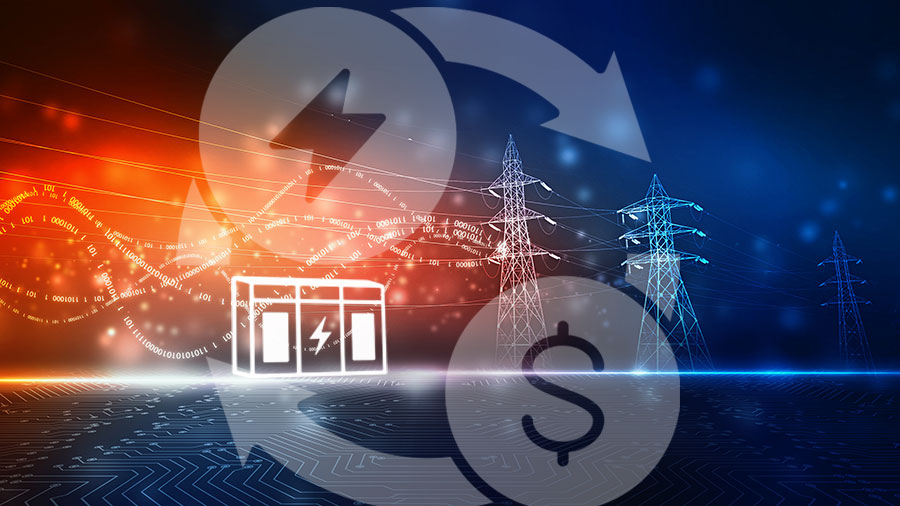Blog
July 25, 2023
How Hybrid Supercapacitor Backup Energy Storage can be a Future Revenue Source
By Joe McGarvey, Marketing Director |

Question: What do Play-Doh®, the Slinky®, Viagra® and, quite possibly, hybrid supercapacitor energy storage modules have in common?
Answer: All are products that eventually became better known for uses other than their original purpose.
Slinky and Play-Doh, two of the most commercially successful toys ever invented, have unremarkable origin stories. The former was developed by the U.S. military to stabilize devices on ships and the latter to clean wallpaper. When it comes to Viagra, let’s just say its popularity peaked only after its current usage was discovered.
Though the hybrid supercapacitor success story is still being written, chances are strong that it won’t be long before the technology inherits a second job that turns out to have a greater impact on the telecommunications industry than the first. That first vocation, providing stationary storage for backup power operations, is by no means inconsequential. Hybrid supercapacitor-based energy storage is more reliable, longer-lasting, safer and greener than the current battery technology that now ensures the continuous operation of broadband networks.
Energy Arbitrage
But where hybrid supercapacitors, like the ATX Areca™ family of energy storage modules, have a real opportunity to impact the standby power industry is the energy arbitrage market. It turns out that the attributes that make hybrid supercapacitors superior to lead-acid and lithium-based batteries, primarily the ability to discharge and recharge tens of thousands of times over their lifetimes, are also essential requirements for allowing telecommunications providers to generate revenue by selling idle energy storage back to utility companies.
The way energy arbitrage works is that stored energy can be sold back to the grid when electricity rates are at the highest, usually during peak usage time, and then replenished, or recharged, when electricity is at its cheapest. It’s the same buy-low-sell-higher proposition that has made millions for those dabbling in stocks, pork bellies, baby food, diapers and other common financial and retail arbitrage items.
Hybrid supercapacitors can be programmed to always prioritize their standby power responsibilities, eliminating the risk of service providers being without backup energy during those moments when the grid is unable to power the plant.
The hybrid supercapacitor’s unique properties could also offer broadband service providers the opportunity to participate in what is known as the Energy Imbalance Market (EIM), a program the utility industry started a few years ago to better balance energy supply and demand. Governments typically require that utility companies can meet peak energy demands, which often occur during extreme weather events, where electricity usage is at its highest.
That requires utility companies to forge relationships with what are essentially backup energy suppliers, which sell energy back to the grid when the situation demands. Currently, many of those suppliers, often referred to as spinning reserves, are fossil fuel-powered plants. By replacing those air-fouling sources with clean energy storage from hybrid supercapacitors, telecommunications companies could generate revenue from an otherwise idle asset in their networks, as well as help rid the planet of some of its biggest climate-change accelerators.
Unique Attributes
So, what on the hybrid supercapacitor’s resume makes the technology the perfect candidate for this job? For starters, hybrid supercapacitors last longer and recharge faster than alternative, chemical-based, storage mediums — and nearly 100% of their storage capacity is usable energy, a storage statistic known as Depth of Discharge (DoD). But their most important qualification is their ability to discharge and recharge, known as cycle life, roughly 20,000 times during their lifetime, without serious degradation.
That blows away lead-acid batteries, which are essentially ineligible for energy arbitrage due to their low cycle rate of about 1,500 cycles. Lithium batteries, with a cycle life of roughly 3,000 to 10,000 cycles, are currently deployed in some energy arbitrage environments. But they pale in comparison and will always finish second in Employee of the Month contests if they are competing with hybrid supercapacitors.
And don’t worry that hybrid supercapacitors moonlighting as energy arbitrage agents will be unable to perform their day job. Hybrid supercapacitors can be programmed to always prioritize their standby power responsibilities, eliminating the risk of service providers being without backup energy during those moments when the grid is unable to power the plant.
Hybrid supercapacitors can not only outwork their alternatives, they are also not susceptible to environmental or safety mishaps, like chemical leakage or thermal runaway, a condition that infects all electrochemical power sources. Don’t look for hybrid supercapacitors to be the subject of news stories similar to the ones generated by the all-too-frequent incidences of lithium-battery fires.
Read all About It
How much revenue telecommunications providers can generate from selling back energy to the grid depends, of course, on the amount of stored energy in your network and what portion you dedicate to energy arbitrage. A promising sign is that telecom providers appear to be attractive energy sources for utility companies because their networks — and their energy storage reserves — are distributed throughout thousands of neighborhoods, lining up almost perfectly with the electricity distribution architecture of most energy suppliers.
ATX is currently preparing a paper on the use of hybrid supercapacitors for energy arbitrage to be presented at the 2023 SCTE Cable Tec-Expo that will go into much greater detail, as well as provide insight into multiple business models and their revenue-generating potential.
In the meantime, cable operators and others need to understand that as compelling as hybrid supercapacitors are as an energy cache for backup power operations today, cable operators and other broadband providers may be associating the technology more with the cha-ching! of energy arbitrage in the future.

